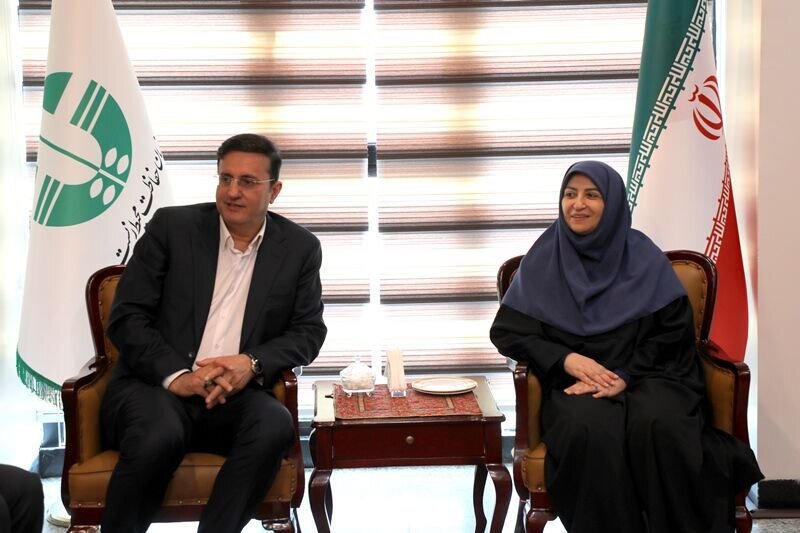DOE Boosts Collaboration with Natural Resources and Watershed Management Organizations for Sustainable Solutions
In recent discussions about the pressing issue of sand and dust storms (SDSs), the head of the Department of Environment (DOE), Shina Ansari, alongside Ali Teymouri, the head of the natural resources and watershed management organization, explored collaborative strategies to tackle environmental challenges. This meeting focused on enhancing air quality, managing forest fires, and promoting sustainable forest management practices.
The officials convened on Sunday to brainstorm practical solutions aimed at mitigating the impacts of SDSs and improving overall air quality. Key discussions included:
- Preventing and managing forest fires: Strategies to safeguard forests from uncontrolled fires.
- Community involvement: Engaging local communities in forest conservation and management.
- Scientific valuation of forests: Utilizing scientific methods to assess the economic value of forests.
- Formulating sustainable development policies: Crafting policies that ensure the longevity of natural resources.
To ensure these initiatives are effectively implemented, a joint committee is set to be established. This committee will oversee the progress of the discussed topics and is expected to enhance preparedness through joint drills for crisis management.
On March 9, the DOE further emphasized the importance of natural resource conservation during a national conference held in Tehran. In her address, Ansari remarked, “Given that the country is affected by climate change, we need to take steps to develop adaptation solutions and foster resilience. It will require close cooperation among different organizations.” This highlights the urgency for collaborative efforts in combating climate-related issues.
Ansari noted a significant concern: “Over the last century, the world has lost one-third of its natural resources. In our country, the depletion of natural resources has occurred in both quantitative and qualitative terms for various reasons.” This stark reality underscores the need for innovative approaches to resource conservation.
While discussing forest value, Ansari pointed out that economic benefits are often prioritized, neglecting vital non-market services such as:
- Water regulation: Maintaining the balance of water resources.
- Soil conservation: Preventing erosion and maintaining soil health.
- Carbon sequestration: Absorbing carbon dioxide to mitigate climate change.
- Habitat for biodiversity: Supporting a wide range of plant and animal species.
The DOE is actively estimating the value of 64 percent of sensitive ecosystems to better understand their economic significance. This assessment aims to elucidate the true value of natural capital, which, as Ansari emphasized, is not everlasting. “Moreover, it will help make correct decisions between development goals and the benefits of healthy ecosystems,” she added, highlighting the need for informed decision-making.
Forests play a crucial role, hosting around 80 percent of terrestrial biodiversity. Ansari noted that forest degradation leads to severe habitat destruction, contributing to species loss. To combat this, she emphasized several key factors essential for preserving natural resources:
- Promoting environmental culture: Fostering awareness and appreciation for nature.
- Educating local communities: Providing knowledge and tools for sustainable practices.
- Restoring damaged areas: Rehabilitating ecosystems that have been harmed.
- Developing sustainable forest management plans: Creating guidelines that ensure resource sustainability.
- Utilizing modern technologies: Leveraging tech for efficient monitoring and management.
According to the secretary of the national policymaking headquarters for addressing sand and dust storms, significant progress has been made. “2.5 million hectares of sand dust storm hotspots in the country have been stabilized over the past six years,” demonstrating collaborative efforts with various organizations.
SDS hotspots, which span 23 provinces, cover approximately 35 million hectares and are a primary source of dust pollution throughout the country. Ali-Mohammad Tahmasbi, an official with the DOE, noted, “The stabilization of 120,000 hectares of SDS hotspots in the southeast of the province is one of the significant measures of the national headquarters.” This achievement represents successful cooperation and synergy between the administration and other institutions.
Tahmasbi further stressed the importance of adopting region-specific measures based on factors such as soil type, climate, and available water resources to achieve optimal results. This tailored approach is crucial for effectively managing the impacts of SDSs.
In conclusion, the collaborative discussions between DOE officials have set the stage for a robust response to environmental challenges. By focusing on sustainable practices, community involvement, and scientific assessments, these initiatives aim to create a healthier ecosystem for future generations. The collective effort of various organizations and local communities will be vital in protecting and conserving Iran’s natural resources.






